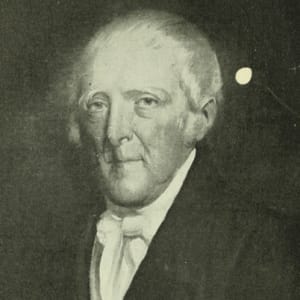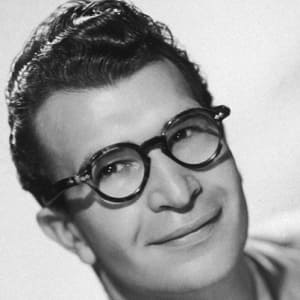
Siouxsie Sioux
Siouxsie Sioux is best known as the lead singer of the group Siouxsie and the Banshees, whose most popular singles include “Peek-A-Boo,” “Cities in Dust,” “The Killing Jar” and “Kiss Them For Me.”
Synopsis
Siouxsie Sioux was born May 27, 1957 in Bromley, England. In the mid-1970s, Sioux became part of a group of young punk rockers known as The Bromley Contingent—rabid Sex Pistols fans known for their provocative clothing and public antics. She went on to become the lead singer of Siouxsie and the Banshees, whose most popular singles include "Peek-A-Boo," "Cities in Dust," "The Killing Jar," "Fear (of the Unknown)" and "Kiss Them For Me," the band's only song to crack the U.S. Top 40. After the Banshees split in the mid-1990s. Sioux began collaborating with other musicians, and then worked as a solo artist.
Early Life
Siouxsie Sioux was born as Susan Janet Ballion on May 27, 1957 in Bromley, Kent, England. Her father was a successful scientist, but was also an alcoholic, and died of cirrhosis of the liver when Sioux was only 14 years old. As a result, Sioux was raised primarily by her mother, a secretary. Sioux recalled that her mother "went out to work at a time when I didn't know anyone else's mum who wasn't at home. I had a great teacher there, and I've had to remember that." Sioux added, "she was the odd-job man, too, changing fuses, painting, doing the gardening. My dad was there, but not functioning."
As much as she admired her mother, growing up with one working parent meant that young Sioux endured a very lonely childhood. "I was left on my own a lot because my mother had to go out to work and there was no one else at home," she remembered. "From an early age I didn't like people very much … I used to talk to myself a lot and practice being Bette Davis on the stairs. I'd wear my mother's stilettos and use a white pencil as a cigarette—I remember learning to smoke just like Bette Davis. I must've been a little bit looney when I was young, but I was quite happy being left to my own devices."
Siouxsie and the Banshees
By the time she was 18 years old, in 1975, Sioux had become part of a group of young punk rockers known as The Bromley Contingent—rabid Sex Pistols fans known for their provocative clothing and public antics. In September 1976, Sioux, serving as lead singer and songwriter, formed a band with fellow Bromley Contingent members Steven Severin (bass), Marco Perroni (guitar) and Sid Vicious (drums). Calling themselves Siouxsie and the Banshees, the band made their debut at London's 100 Club soon after, with a performance that consisted entirely of a 20-minute rendition of The Lord's Prayer.
Several months later, on December 1, 1976, Sioux appeared with the Sex Pistols on ITV's Today Show, hosted by Bill Grundy. Sioux's coy flirting with Grundy—and Grundy's lewd response—prompted members of the Sex Pistols to hurl obscenities at him in an infamous exchange that simultaneously marked downfall of Grundy's career and the ascent of Sioux's.
After some reshuffling in 1978, in which Sid Vicious and Marco Perroni left the band to be replaced by Kenny Morris and John McKay, Siouxsie and the Banshees released their debut single, "Hong Kong Garden," which reached No. 7 on the UK singles chart. Later that year, they released their debut album, The Scream, a discordant, exuberant and highly original record, to rave reviews. Following the acclaimed 1979 follow up, Join Hands, the band's lineup once again reshuffled to include the drummer known simply as "Budgie." While Siouxsie and the Banshees cycled through many musicians over the next decades, Sioux, Severin and Budgie remained the band's core nucleus throughout its duration.
Throughout the 1980s and '90s, Siouxsie and the Banshees surprised critics by outliving the shock and energy of their early years to become one of the most enduring punk rock bands of all time. The band's 11 total studio albums include Kaleidoscope (1980), A Kiss in the Dreamhouse (1982), Tinderbox (1986), Superstition (1991) and their final album, The Rapture (1995). Their most popular singles include "Peek-A-Boo," "Cities in Dust," "The Killing Jar," "Fear (of the Unknown)" and "Kiss Them For Me," the band's only song to crack the U.S. Top 40.
Other Projects
Sioux and Budgie created a separate band called The Creatures as a side project in 1981. That year, they released an EP called Wild Things, and in 1983 they released their debut album, Feast, which proved to be an enormous critical and commercial success. After The Creatures' 1989 album Boomerang, Sioux and Budgie set The Creatures aside to work with the Banshees. However, after the band's 1996 breakup, Sioux and Budgie turned back to performing and recording as The Creatures full time. They increased their touring schedule and released an EP, Eraser Cut, in 1998 followed by the full-length album Anima Animus in 1999, featuring the hit songs "2nd Floor," "Say" and "Prettiest Thing." In 2003, The Creatures released their second and final album, Hai!, which featured the single "Godzilla."
Since then, Siouxsie Sioux has continued to tour as a solo artist, performing a mix of Siouxsie and The Banshees and The Creatures songs alongside new material. In 2007, Sioux and Budgie divorced. That same year, she released her first solo album, MantaRay, featuring the songs "Into a Swan" and "Here Comes That Day."
Musical Legacy
One of the most influential singers in the history of punk rock, Sioux stands out for the extraordinary breadth of her career, a rarity among punk rockers, and the consistently outstanding quality of her music. All of her albums, without exception, received rave reviews—no small feat for someone who has recorded as many records as Siouxsie Sioux.
Sioux says that her continued success can be explained by her willingness to evolve to write music that suits the ever-changing state of her life and the world, rather than clinging to the punk angst that defined her early music. "It lost its teeth," Sioux said of punk music. "People forget it was an attitude, a mindset, reacting to what was going on in the world, in music, at that time. You can't take that and place it now: that would just be mimicry … People doing their own thing—that's punk."




